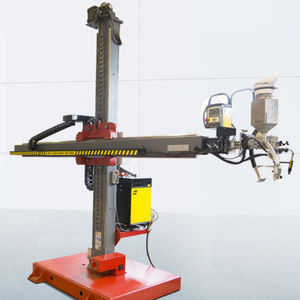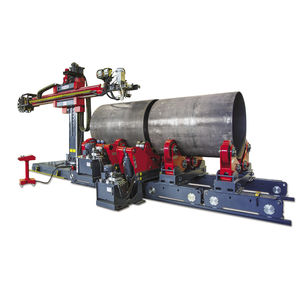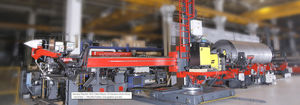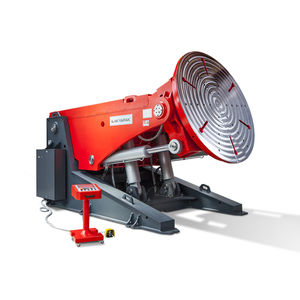
- Industrial machines and equipment
- Welding and Assembly
- Adjustable welding rotator
- AKYAPAK MAKINA SAN TIC
- Products
- Catalogs
- News & Trends
- Exhibitions
Adjustable welding rotator CR conventionalroller







Add to favorites
Compare this product
Characteristics
- Type
- roller, adjustable, conventional
Description
Conventional rotators are a high quality and economical solution for peripheral welding of cylindrical parts in cases that the diameter is not highly variable. Used for rotating circular parts such as tanks, pressurized containers, tower piping, boiler, silos, reactors, fuel drums etc.
Rotators improve the speed and efficiency both during automatic and manual welding and have an important role in steel construction workshops by minimizing crane operation..
Operators can rotate the pieces mounted on the rotator clockwise or counterclockwise, precisely, well-aligned and controllable via control panel, in easily adjustable speeds. Conventional rotators comprise of two units as 1 drive and 1 idle unit. Number of drive and idle units can be changed according to the application conditions.
Akyapak Makine includes 1 to 300 tons conventional rotators in its standard lists. However, custom production can be realized up to 600 tons.
STANDARD FEATURES
“PU” roller absorbing shocks and vibrations
Manual diameter adjustments
Adjustable rotating speed
Remote controller with 5 meter cable length
Digital speed indicator on the controller panel for monitoring rotation
Motors with brake
OPTIONAL FEATURES
Custom roller designs for areas that require high temperature
Axis Support
Brush Earthing System
Bogie Rail Travel system
Master Control Panel (see the option in Column &Boom)
Rail
Auto diameter adjustment (motorized)
Catalogs
Related Searches
- Industrial press
- Welding system
- Hydraulic press
- Forming press
- Automatic welding system
- Arc welding system
- Standalone welding system
- Frame press
- Hydraulic welding machine
- Welding positioner
- Welding press
- Rotary welding positioner
- Electric welding positioner
- Profile welding machine
- AKYAPAK welding rotator
- Multi-axis welding positioner
- Hydraulic welding positioner
- Roller welding rotator
- Adjustable welding rotator
- Beam welding rotator
*Prices are pre-tax. They exclude delivery charges and customs duties and do not include additional charges for installation or activation options. Prices are indicative only and may vary by country, with changes to the cost of raw materials and exchange rates.















